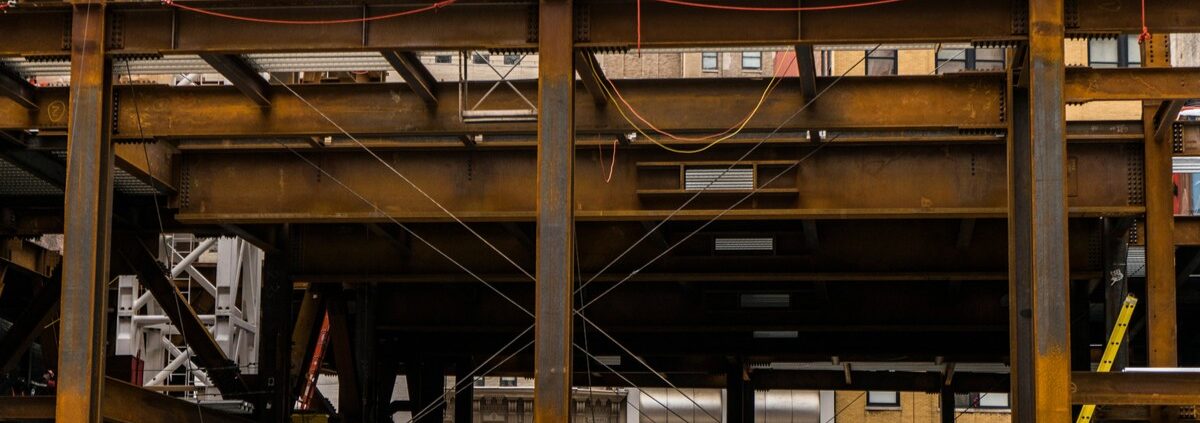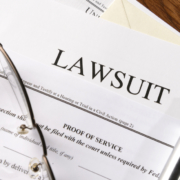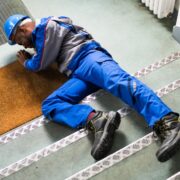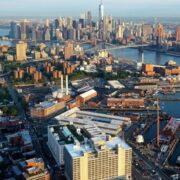Developers Want to Make One Of NYC’s Most Dangerous Jobs Even Riskier
By Maurizio Guerrero, Documented NY
Janusz Zdybel, a 33-year-old immigrant from Poland, died while working inside a church a decade ago.
Zdybel was installing a safety net under the ceiling of the St. Paul the Apostle church on the Upper West Side in Manhattan in October 2011 when he plunged 12 stories to his death in October 2011. Working on a scaffold, Zdybel hit a live cable with a drill and fell from the shock. He left behind his wife who was seven-months pregnant when the accident occurred.
Everardo Bonilla, one of the workers on the site that day, said Zdybel and the other workers were not using the mandatory lifeline rope that prevents them from plummeting to the ground if they fall. Few of the workers had any safety training or equipment, said Bonilla, who arrived in New York from the state of Tlaxcala in Mexico in 1993.
“We had none of that,” he said. “What we had was an employer who wanted to get the job done and workers who needed the job to support themselves.”
Since he arrived in New York, Bonilla has risked his life while working on scaffolds. It’s the most dangerous job in the second deadliest industry in New York City, after transportation. Falls from elevations are the leading cause of on-the-job deaths in construction, accounting for more than one-third of all the fatalities in the industry, according to The New York Committee for Occupational Safety and Health, a nonprofit that publishes an annual report on accidents.
Construction in the city has been skyrocketing in the last few years, even during the pandemic. Companies spent an estimated $55.5 billion on construction projects in the city in 2020, which is a higher total than six of the last eight years.
Still, the construction industry has long complained New York construction regulations are too restrictive. Backed by insurance companies, the construction industry has fought for years to eliminate a critical protection for workers: the State’s Labor Law 240 — commonly known as the Scaffold Law. If enforced, it could have saved Zybdel’s life.
The law requires property owners and contractors to provide workers with adequate safety equipment when working at high elevations. If they don’t, the law holds the owners and contractors fully responsible for accidents and unable to blame a worker when something goes wrong. Section 240 also allows injured workers to receive larger payments than they would under common law or workers’ compensation.
Last October, a business group led by the New York Conference of Mayors and several contracting trade organizations asked former Gov. Andrew Cuomo to repeal the law. The group argued the law increases insurance costs on New York public projects by $785 million each year, and that taxpayers have to pay that bigger bill. The law, which they characterized as an “outdated absolute liability,” has worsened the “bleak” environment for investment amid the pandemic.
But scrapping the Scaffold Law would likely cost lives. Many contractors and subcontractors already avoid providing safety equipment to their workers, especially undocumented immigrants, according to several laborers interviewed by Documented, and those immigrants can’t usually get support elsewhere.
“Sadly, migrants cannot get access to the big unions,” said Eduardo Redwood, a 60-year-old Ecuadorian immigrant who has worked in construction since he arrived in New York two decades ago. Unions can help workers secure labor representatives who can help ensure compliance with the law in their workplaces. But union construction companies also usually bid on large public projects, where workers need to provide photo IDs and social security numbers, among other requirements that often mean undocumented immigrants can’t work there. So, often with limited English and in desperate need of a job, immigrants fend for themselves.
“The contractors and the subcontractors steal the workers’ money,” Redwood said. “They’d rather increase their profits than invest in protective equipment for the workers’ safety.”
Redwood, who used to set scaffolds, said his employer provided the crew only with second-hand harnesses and helmets. “We had to buy our own protective equipment,” he said.
The industry push to end the Scaffold Law has operated on several tracks and government levels. After appealing to Cuomo, three New York-based contractor groups, endorsed by the New York State Conference of Mayors and Municipal Officials, asked U.S. Transportation Secretary Pete Buttigieg to dispense provisions of the Scaffold Law for companies working on the $11.6 billion Hudson River Tunnel construction project.
In a letter sent in April, the groups argued insurance costs for the contractors working on the project increased between $180 million and $300 million due to the law. Since New York is the only state with such a law, the industry proposed replacing it with comparable regulations from other states that determine liability in cases of injury in the workplace. Buttigieg did not publicly react to the request.
“We know that the construction industry is one of the most dangerous industries to work in New York State,” said Assemblywoman Carmen de la Rosa, a Democrat representing the 72nd District in the New York State Assembly. She sponsored a bill to create a registry of construction workers’ deaths in the state, which was approved earlier this year. “We know that an overwhelming majority of construction workers are immigrant workers, many undocumented,” she said.
If an undocumented worker suffers an injury, “they have to endure the pain,” said Salvador Suárez, who emigrated from Ecuador to New York in 1993 and has worked since then in construction. The compensation, if offered, solely depends on the employer’s criteria, even though every laborer, regardless of their immigration status, is legally entitled to redress in case of injury in the workplace under New York State Labor Law. Any amount given to an injured immigrant worker “make us happy because we don’t have anywhere to go” to complain, Suárez said.
Construction is already a hazardous profession, but in New York, it is becoming more dangerous. Even with the Scaffold Law in place, the number of workers’ fatalities increased for the third year in a row in New York City in 2019, the last year for which figures are available. In that year, 26 construction workers died, compared to 23 in 2018 and 20 in 2017. Fewer legal protections could put even more workers at risk, especially non-unionized workers.
Immigrants often “feel pressured by the employers to do things that we know are dangerous,” said Silvia Salazar, who emigrated from Guatemala when she was 33 years old in 2004. She has worked almost 14 years at New York construction sites. Alluding to the sense of invisibility frequently expressed by undocumented immigrants, Salazar said workers should learn to refuse hazardous tasks to avoid becoming “just a number” in the tallies of fatalities.
“We don’t have to come to this country to die,” she said, “but to work for our dreams and our families.”












Leave a Reply
Want to join the discussion?Feel free to contribute!